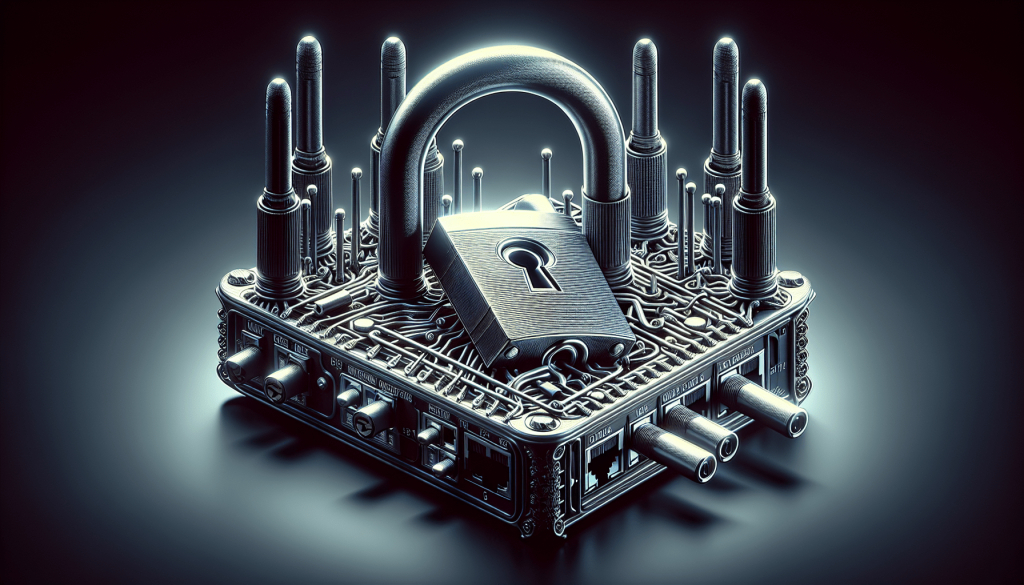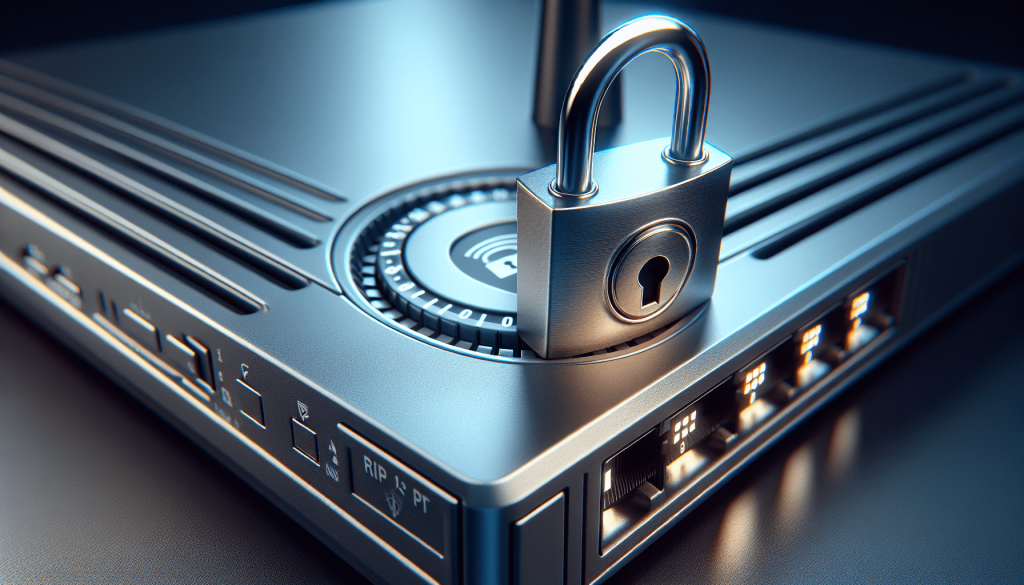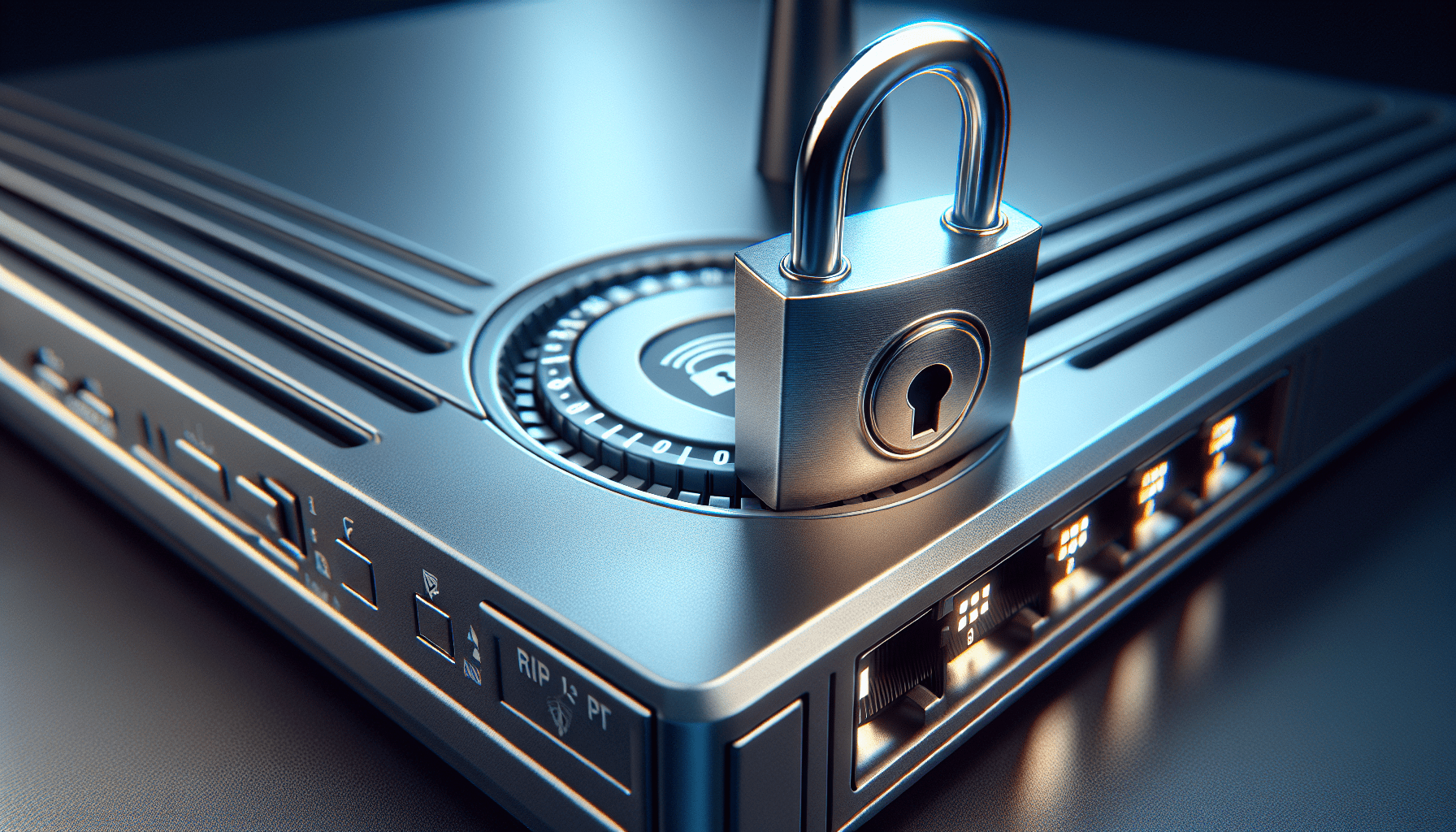In today’s digital world, ensuring the security of your router against cyber threats is more important than ever before. With the increasing reliance on internet-connected devices, hackers and malicious individuals are constantly finding new ways to exploit vulnerabilities in routers, putting your personal and financial information at risk. This article will provide you with valuable insights and practical tips on how to safeguard your router from cyber threats, giving you peace of mind and a safer browsing experience.
Update Router Firmware Regularly
Why is firmware important?
Firmware refers to the underlying software that runs on your router. It controls the router’s functionality, performance, and security features. Regularly updating your router firmware is crucial because it ensures that your router has the latest bug fixes, security patches, and enhancements. By keeping your firmware up to date, you can protect your network from potential vulnerabilities and exploits that cybercriminals may target.
How to check for firmware updates
Checking for firmware updates is a simple process. Start by accessing your router’s web-based interface. Open your web browser and enter the router’s IP address. Once you are logged in, navigate to the firmware section or settings. Look for an option that allows you to check for updates. Click on it, and the router will connect to the manufacturer’s server to check if there are any available firmware updates.
How to update router firmware
If there is a newer firmware version available, you can proceed with updating your router. Most routers have a built-in update feature that allows you to download and install the latest firmware directly from the manufacturer. Simply click on the update button, and the router will take care of the rest. It may take a few minutes for the process to complete, so be patient and avoid interrupting the update. Once finished, your router will be running the latest firmware, ensuring optimal performance and security.
Change Default Router Login Credentials
Importance of changing default credentials
When you purchase a router, it often comes with default login credentials, such as a generic username and password. However, leaving these default credentials unchanged can pose a serious security risk. Cybercriminals are well aware of the default login information for various router models and can easily gain unauthorized access to your router. Changing the default login credentials is essential to prevent unauthorized access and protect your network from potential threats.
How to change router login username and password
Changing your router’s login credentials is a straightforward process. Start by opening your router’s web-based interface by entering the IP address in your browser. Once logged in, navigate to the “Admin” or “Management” section. Look for an option that allows you to change the username and password. Enter a unique and strong username and password combination. Make sure to avoid using common phrases, personal information, or easily guessable passwords. Save the changes, and your router will now have updated login credentials, enhancing the security of your network.

Enable Network Encryption
Why is network encryption necessary?
Network encryption is a vital security measure that protects your wireless network from unauthorized access and eavesdropping. When your network is encrypted, the data transmitted between your devices and the router is scrambled and can only be deciphered by devices with the correct encryption key. By enabling network encryption, you can ensure that your sensitive information, such as passwords or financial data, remains secure and protected from potential attackers.
Different encryption protocols
There are different encryption protocols available for securing your wireless network. The most commonly used encryption protocols are WEP (Wired Equivalent Privacy), WPA (Wi-Fi Protected Access), and WPA2 (Wi-Fi Protected Access 2). It is highly recommended to use WPA2 or its successor, WPA3, as they provide significantly stronger security than the outdated WEP protocol. WPA2 and WPA3 use advanced encryption algorithms that make it extremely difficult for attackers to decrypt your network traffic.
How to enable network encryption on your router
To enable network encryption on your router, access the router’s web-based interface and navigate to the wireless settings. Locate the encryption or security settings and choose the appropriate encryption protocol, preferably WPA2 or WPA3. You will need to enter a passphrase or encryption key, which will be used to authenticate and encrypt the network traffic. Select a strong passphrase or generate a random encryption key for maximum security. Click on save or apply to enable network encryption on your router, securing your wireless network.
Disable Remote Access
Risks of allowing remote access
Remote access allows you to manage your router’s settings and configurations from outside your home network. While it can be convenient, enabling remote access without proper security measures can leave your router vulnerable to exploitation. If cybercriminals gain unauthorized access to your router remotely, they can take control of your network, intercept sensitive data, or launch malicious attacks. Disabling remote access ensures that only devices within your home network can manage the router, significantly reducing the risk of unauthorized access.
Steps to disable remote access on your router
To disable remote access on your router, access the router’s web-based interface and navigate to the remote management settings. Look for an option that allows you to enable or disable remote access. Choose the option to disable remote access, save the changes, and exit the settings. By doing so, you ensure that the router’s management interface is only accessible within your local network, reducing the chances of unauthorized access from external sources.

Use Strong Wi-Fi Passwords
Why are strong passwords crucial?
A strong Wi-Fi password is a crucial aspect of securing your router and wireless network. It acts as the first line of defense against unauthorized access. Weak or easily guessable passwords make it easier for attackers to crack your network encryption and gain access to your network. By using a strong Wi-Fi password, consisting of a combination of uppercase and lowercase letters, numbers, and special characters, you significantly increase the complexity and difficulty of guessing or cracking your password.
Tips for creating a strong Wi-Fi password
Creating a strong Wi-Fi password doesn’t have to be complicated. Here are some tips to help you create a robust password:
- Use a minimum of 12 characters: Longer passwords are harder to crack.
- Mix uppercase and lowercase letters: This increases password complexity.
- Include numbers and special characters: Adding numbers and special characters strengthens your password.
- Avoid using personal information: Don’t use names, birthdays, or other easily guessable information.
- Don’t reuse passwords: Each Wi-Fi password should be unique to your network.
- Regularly update your Wi-Fi password: Change your password periodically to enhance security.
By following these tips, you can create a strong Wi-Fi password that adds an extra layer of security to your network.
Enable Firewall Protection
Understanding the role of a firewall
A firewall is a security feature that acts as a barrier between your network and the internet. It monitors and filters incoming and outgoing network traffic, allowing only authorized connections and blocking potentially harmful traffic. By enabling firewall protection on your router, you create a defensive mechanism that helps protect your network from unauthorized access, malicious attacks, and malware infections.
How to enable firewall protection on your router
To enable firewall protection on your router, access the router’s web-based interface and navigate to the firewall or security settings. Look for an option to enable or disable the firewall. Choose the option to enable the firewall and save the changes. Your router will now start filtering network traffic and protecting your network from potential threats. It is important to note that different router models may have slightly different firewall configuration options, so consult your router’s user manual or manufacturer’s website for specific instructions.
Enable MAC Address Filtering
What is MAC address filtering?
MAC address filtering is a security feature that allows you to control and restrict access to your network by specifying which devices are allowed to connect to your router. Every network-enabled device has a unique MAC (Media Access Control) address, which can be used to identify and filter devices. By enabling MAC address filtering, you can prevent unauthorized devices from connecting to your network, adding an additional layer of security to your router.
How to set up MAC address filtering on your router
To set up MAC address filtering on your router, access the router’s web-based interface and navigate to the MAC address filtering settings. You will typically find this under the wireless or security settings. Configure the router to only allow connections from specific MAC addresses that belong to devices you trust. This means that only devices with their MAC addresses added to the allowed list will be able to connect to your network. Save the changes, and your router will enforce MAC address filtering, providing enhanced network security.
Disable WPS
The vulnerabilities of WPS
WPS (Wi-Fi Protected Setup) is a feature designed to simplify the process of connecting devices to a Wi-Fi network. However, WPS has known vulnerabilities that can be exploited by attackers to gain unauthorized access to your network. These vulnerabilities include brute-force attacks and the potential for PIN-based attacks. Disabling WPS on your router is recommended to eliminate these risks and ensure the highest level of security for your wireless network.
Steps to disable WPS on your router
To disable WPS on your router, access the router’s web-based interface and navigate to the wireless settings. Look for an option related to WPS and disable it. Save the changes, and WPS will be turned off on your router. It’s important to note that newer router models may have the option to disable WPS under a different name, such as “Wi-Fi Protected Setup,” “WPS PIN,” or similar. Refer to your router’s user manual or the manufacturer’s website for specific instructions on how to disable WPS.
Monitor Connected Devices
Importance of monitoring devices on your network
Monitoring the devices connected to your network allows you to identify any unauthorized or suspicious activity, helping you maintain the security and integrity of your network. By regularly checking the devices connected to your router, you can quickly identify and mitigate potential security threats, such as unauthorized devices or unfamiliar network traffic.
Tools for monitoring connected devices
There are several tools and methods available to monitor the devices connected to your network. Many modern routers have built-in features that allow you to view and manage connected devices through a web-based interface. These interfaces often provide information such as device names, IP addresses, and MAC addresses. Additionally, network monitoring software or mobile apps can provide more advanced monitoring capabilities, allowing you to receive real-time alerts and track device activity. Explore the options that best suit your needs and ensure that you regularly monitor the devices connected to your network for enhanced security.
Disable UPnP
Understanding UPnP and its risks
UPnP (Universal Plug and Play) is a convenient feature that automatically establishes network connectivity between devices and services within your network. While UPnP simplifies network configuration, it also introduces potential security risks. UPnP can allow malicious software or unauthorized devices to automatically open ports on your router, making your network more vulnerable to external threats. Disabling UPnP is a proactive measure to prevent these risks and maintain a higher level of control over your network security.
Steps to disable UPnP on your router
To disable UPnP on your router, access the router’s web-based interface and navigate to the UPnP settings. Look for an option related to UPnP and disable it. Save the changes, and UPnP will be turned off on your router. Keep in mind that some devices or applications may rely on UPnP for certain functionalities, so disabling UPnP might affect their functionality. If you encounter any compatibility issues, consider using alternative methods or manually configuring port forwarding for those specific devices or applications.
In conclusion, securing your router from cyber threats is essential to protect your network and personal information. By following these guidelines and implementing the necessary security measures such as updating firmware regularly, changing default login credentials, enabling network encryption, disabling remote access, using strong Wi-Fi passwords, enabling firewall protection, enabling MAC address filtering, disabling WPS, monitoring connected devices, and disabling UPnP, you can significantly enhance the security of your router and safeguard your network against potential cyber threats. Remember to stay vigilant, keep your router’s firmware up to date, and regularly review your security settings to ensure the ongoing protection of your network and connected devices.
